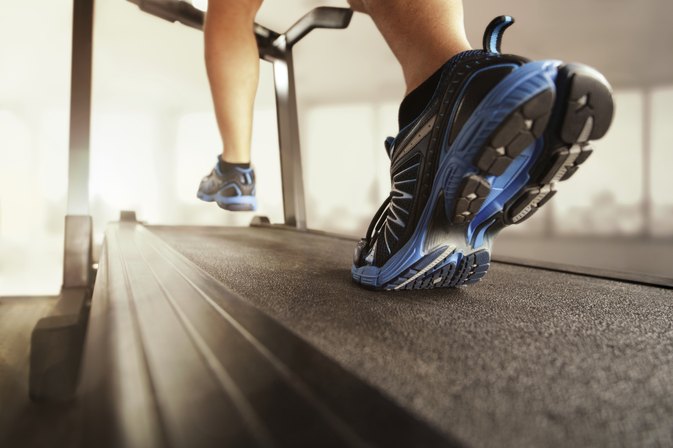Author
by
http://www.livestrong.com/article/260805-the-recovery-heart-rate-time-after-cardio-exercise/
by
"Recovery heart rate" refers to the heart’s ability to return to normal levels after physical activity. Fitness level and proper function of your heart are measured by the recovery phase. A heart that is healthy will recover at a quicker rate than one that is not healthy or is not accustomed to regular exercise. If your heart does not recover in reasonable time, you may have a heart problem.
First Minute of Recovery
The first minute of recovery is the most crucial. After exercise, your heart rate experiences an abrupt drop during the first minute. This recovery period can indicate fitness level and give an early warning of potential heart problems. In an October 1999 article in “The New England Journal of Medicine,” a study performed by the Cleveland Clinic Foundation classified a heart rate decrease of 12 beats or less in the first minute as abnormal. The study also reported that people with an abnormal decline in heart rate had a greater chance of mortality in the subsequent six years due to heart problems.
Two-Minute Recovery
The heart rate two minutes after exercise is referred to as the recovery heart rate. This is the most common measurement in determining cardiovascular fitness. To test for improvements, record the working heart rate during exercise, then record recovery heart rate at the two-minute mark. Subtract the two-minute recovery rate from the working heart rate to determine a baseline for improvement. For example, if working levels were 150 beats per minute and the two-minute recovery rate was 95, then 55 is the recovery heart rate.
Resting Plateau
After the first minute of recovery, heart rate declines into what’s called the resting plateau. During this phase, heart rate progressively declines to pre-workout levels over a 60-minute period. As your heart becomes more fit, you can reach pre-workout levels in a shorter amount of time.
Measuring Heart Rate
Measure your heart rate by lightly pressing your forefinger and middle finger across the carotid artery in the neck or the radial pulse in the wrist. Count the number of beats for 10 seconds, then multiply that number by 6 to determine heart rate. Another way to measure heart rate is through the use of heart rate monitors. These monitors are fairly inexpensive and make the measuring process much easier and more efficient.
Improving Cardiovascular Fitness
Beginning exercisers who aren’t accustomed to physical activity experience noticeable decreases in resting heart rate after exercise. During a 10-week fitness program, you can expect to see a reduction of about 10 beats per minute in your resting heart rate. Through a consistent fitness program, you can consistently improve your cardiovascular health.
http://www.livestrong.com/article/260805-the-recovery-heart-rate-time-after-cardio-exercise/







No comments:
Post a Comment